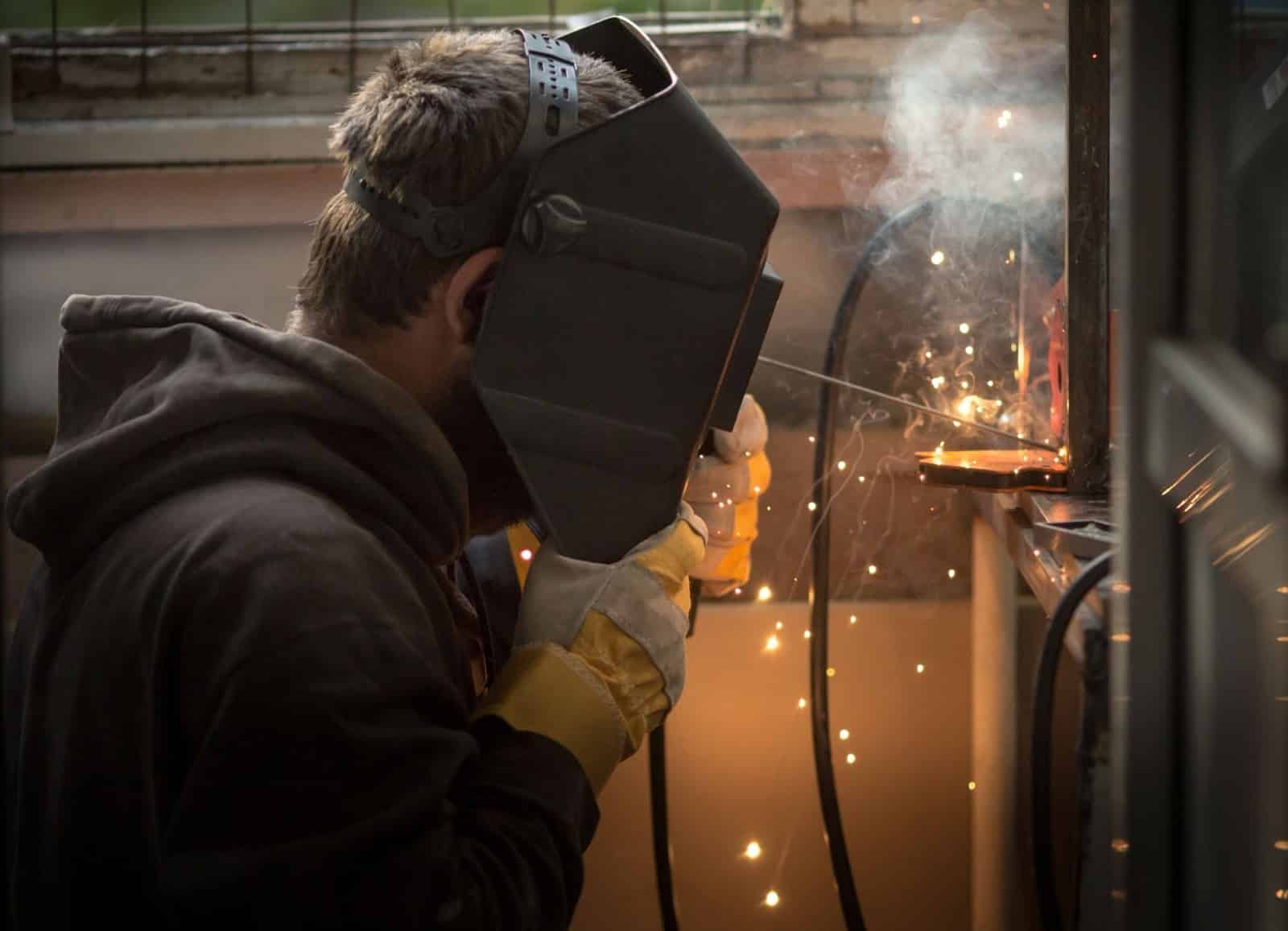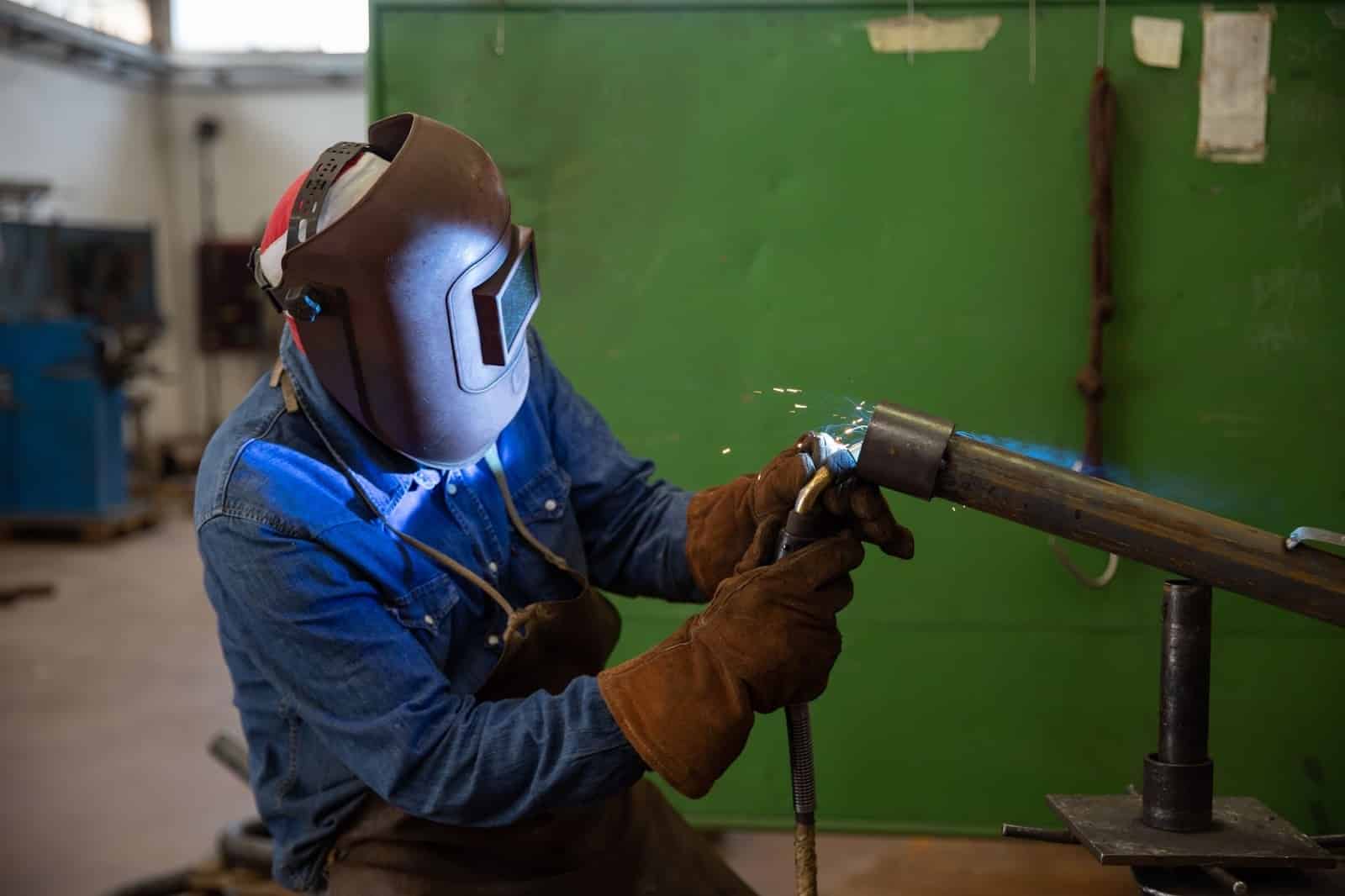
When you’re setting up a MIG welder, the wire you choose matters just as much as your voltage, gas flow, or travel speed.
A good wire gives you a stable arc, cleaner beads, and fewer issues like porosity or heavy spatter.
A bad match, on the other hand, can make even a solid machine feel inconsistent.
In this guide, we’ll break down the common MIG welding wire types, where they’re used, and how to pick the right one for your project.
What Is MIG Welding Wire?
MIG welding wire is a continuous consumable electrode that carries current and melts to form your weld bead.
The wire acts as both the electrode and the filler metal, which is why wire selection has a direct impact on:
- Arc stability.
- Weld bead appearance.
- Penetration and strength.
- Spatter and slag formation.
What Are the Main Types of MIG Welding Wire?
MIG wires are grouped by metal composition, AWS classification, and the conditions they’re designed for. Here’s a closer look at the major categories.
1. Mild Steel MIG Wires
Mild steel wires are the most common choice for fabrication, automotive work, and general shop welding. They’re made for low-carbon steel and come in a few popular AWS grades.
Popular Classifications:
- ER70S-3:
Best used on clean steel. It gives you a smooth, stable arc and works well on light fabrication, thin metal, and parts with minimal contaminants. - ER70S-6:
This wire contains more deoxidizers (manganese and silicon), so it handles slightly rusty or oily steel better than ER70S-3. You’ll see cleaner wet-out, less porosity, and a more forgiving arc.
Shielding gas options:
- 75/25 Argon-CO₂ mix for cleaner welds.
- 100% CO₂ for deeper penetration and higher strength.
Common uses:
- Vehicle repair, structural welding, trailers, fabrication shops.
Tip: If you work with metal that isn’t perfectly clean (and let’s be honest, most of us do), ER70S-6 is usually the safer choice.
2. Stainless Steel MIG Wires
Stainless MIG wires are used where corrosion resistance matters.
Common Classifications:
- ER308L: For welding 304 or 304L stainless steels.
- ER309L: For joining stainless steel to mild steel.
- ER316L: For marine and chemical environments.
Shielding Gas:
- 98% Argon + 2% CO₂ (or O₂), provides smooth arcs and reduces oxidation.
Applications:
Food production equipment, marine parts, railings, chemical tanks.
Tip: Choose “L” grade when possible—the low carbon reduces carbide precipitation and helps prevent weld corrosion over time.
3. Aluminum MIG Wires
Aluminum wire is lightweight, corrosion-resistant, and widely used in automotive, marine, and aerospace work.
Popular Classifications:
- ER4043:
Contains silicon, making it easier to weld with. You’ll see smoother flow and a brighter bead. Works for 4000 and 6000 series aluminum. - ER5356:
Contains magnesium, giving it higher strength. Suitable for 5000 and 6000 series.
Shielding Gas:
- 100% Argon (pure inert gas required).
Applications:
Boat hulls, vehicle panels, bike frames, HVAC, trailers.
Tip: Use a Teflon liner and U-groove drive rolls to avoid bird-nesting. Aluminum wire is soft and jams easily.
4. Flux-Cored MIG Wires (Gasless and Dual-Shield)
Flux-cored wires contain a powdered flux inside the wire.
Types:
- Self-Shielded Flux-Cored Wire (FCAW-S): No gas required; ideal for outdoor welding.
- Gas-Shielded Flux-Cored Wire (FCAW-G): Uses external gas. Cleaner beads and stronger welds.
Common grades:
- E71T-1: Gas-shielded wire for all-position welding.
- E71T-11: Self-shielded wire for outdoor use.
Advantages:
- High deposition rates (faster welds).
- Excellent for thick materials.
- Performs well in windy or outdoor environments.
Applications:
Construction, shipbuilding, and heavy equipment repair.
Reminder: Always chip and clean the slag between passes—skipping this is a fast way to trap inclusions.
5. Copper and Bronze MIG Wires
Copper-based wires are used for brazing and joining dissimilar metals.
Popular Classifications:
- ERCuSi-A (Silicon Bronze):
- Used for brazing steel and joining dissimilar metals.
- Produces a golden, clean bead with minimal spatter.
Shielding Gas:
- 100% Argon.
Applications:
Automotive bodywork, copper plumbing joints, and decorative metal projects.
Tip: Silicon bronze wire is great for thin sheet metal because it uses lower heat and minimizes distortion.
6. Nickel Alloy MIG Wires
Nickel wires are designed for high-heat or corrosive environments.
Common grades:
- ERNiCr-3 (Inconel 82): Joins dissimilar metals like stainless steel to nickel alloys.
- ERNiFe-CI: For cast iron repair.
Shielding Gas:
- Argon or Argon/Helium blend.
Applications:
Power plants, engines, high-temperature piping.
How Do You Read MIG Wire Classifications?
AWS codes tell you everything you need to know about a wire.
ER70S-6
- E – Electrode.
- R – Rod (can be used as filler rod).
- 70 – Tensile strength (70,000 psi).
- S – Solid wire.
- 6 – Chemical composition (deoxidizer level).
This system helps you identify the mechanical properties and suitability of a wire before welding.
How Do You Choose the Right MIG Welding Wire?
Choose a MIG wire based on your base metal, shielding gas, welding position, and environment.
Here’s a simple and practical step-by-step selection guide you can add directly to your workflow:
1. Identify your base metal
Match the wire to the material you’re welding. Mild steel usually takes ER70S-series wires, stainless steel works best with ER308/309/316, and aluminum pairs with ER4043 or ER5356.
2. Look at the condition of your steel
Clean steel is easier to weld, so ER70S-3 is fine. If the surface has light rust, mill scale, or oil, ER70S-6 or a flux-cored wire performs better.
3. Confirm the shielding gas you plan to use
Different gases pair with different wires.
Mild steel typically uses 75/25 or CO₂, stainless needs argon with a small CO₂ or O₂ percentage, and aluminum always runs on pure argon.
Outdoor welding often calls for self-shielded flux core because the wind won’t blow the shielding away.
4. Pick the correct wire diameter
Thin sheet metal works well with 0.023″–0.030″. Standard fabrication usually uses 0.030″–0.035″. Thicker plate benefits from 0.045″ or larger wires.
5. Set up your drive rolls and liner correctly
Each wire type feeds differently. Steel uses V-groove rolls, flux-cored wires need knurled rolls, and aluminum runs smoothly only with U-groove rolls and a Teflon liner.
Quick Comparison: ER70S-3 vs ER70S-6
| Feature | ER70S-3 | ER70S-6 |
| Steel cleanliness needed | Very clean | Handles rust/oil better |
| Deoxidizers | Low | High (Mn + Si) |
| Bead appearance | Smooth | Better wet-out |
| Best use | Thin/clean steel | General fabrication |
What Are the Best Practices for Using MIG Welding Wire?
Use these practices to keep your welds strong and consistent:
- Store Wires Dry: Moisture causes porosity. Keep spools sealed when not in use.
- Clean the Base Metal: Oil, rust, and paint affect fusion.
- Check Wire Feed Setup: Tension, rollers, and liners must match your wire type.
- Set Proper Gas Flow: 20–25 CFH works for most mild steel jobs.
- Control Stick-Out: Keep about ⅜ inch for stable arc performance.
A small adjustment here often fixes issues that look like “bad wire.”
Conclusion: Pick the Right Wire and Your Welds Will Instantly Improve
Choosing the right MIG welding wire is an easy win for cleaner, stronger welds. Match your wire to your base metal, use the right gas, and double-check your feed setup before pulling the trigger.
If you’re unsure where to start, ER70S-6 is one of the most forgiving steel wires, ER4043 is the easiest aluminum wire to run, and ERCuSi-A is excellent for thin bodywork panels.
When you dial in those basics, every pass becomes smoother—and cleanup becomes a whole lot faster.
Faqs
Yes. Low-quality wire causes more porosity, inconsistent arcs, and weak fusion. Good wire runs smoother and produces stronger welds.
0.023″–0.030″ works best because it melts quickly and helps prevent burn-through.
Arc instability usually comes from uneven wire feeding. Check your contact tip, drive-roll tension, and liner condition.
No. Each wire type requires specific gases. Using the wrong gas causes oxidation, poor penetration, and brittle welds.
Most wire stays good for 6–12 months if kept dry. Moisture, rust, or oxidation reduces feedability and weld quality.



